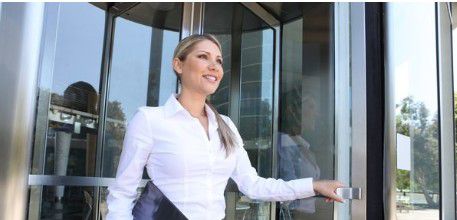独立审计实务公告第4号
|
会协字[1996]457号 Chapter 1 General provisions Article 1 This pronouncement is prepared in accordance with the General Independent Auditing Standard to establish standards and define the working requirements for and to ensure a high standard of professional work by, Certified Public Accountants (“CPAs”) in the course of performing an examination of a prof it forecast. Article 2 The term “examination of a profit forecast” in this pronouncement refers to the CPA's inspection and study of an entity's profit forecast and the expression of an opinion on the examination, following the CPA's acceptance of the engagement in accordance with relevant laws and regulations. The term “entity” in this pronouncement refers to those enterprises or other units which are responsible for the preparation of the profit forecast and which engage the CPAs to examine the profit forecast. The term “profit forecast” in this pronouncement refers to the entity's estimation of the operating results in future accounting periods. Article 3 Unless otherwise specified, CPAs should refer to this pronouncement in the course of performing examinations of other financial forecasts. Chapter 2 General principles Article 4 It is CPA's responsibility to issue a report on the examination of a profit forecast in accordance with the requirements in this pronouncement and to ensure the truthfulness and legitimacy of such a report. It is the entity's responsibility to prepare and adequately present the profit forecast. Article 5 The purpose of the CPA's examination of the profit forecast is to examine the basic assumptions upon which the entity's profit forecast is based, the accounting policies followed and the basis of preparation and to express an opinion. Article 6 There are inherent uncertainties in any profit forecast. A profit forecast cannot be free of subjective judgement. The CPA should not guarantee the probability of achieving the predicted results. Article 7 Before accepting the engagement, the CPA and the client should discuss the purpose and scope of the examination of the profit forecast and the responsibilities and duties of both parties. The CPA should also consider his own competence and ability to maintain independence in determining whether to accept the engagement. If the CPA considers that the basic assumptions upon which the profit forecast is based are unrealistic, or the use to be made of the forecast deviates from its original purpose, the CPA should clearly inform the entity to take corrective action. If the entity insists that it will not take corrective action, the CPA should refuse to accept the engagement or should withdraw from the engagement. Article 8 The scope of the examination of the profit forecast should be determined in accordance with the requirements of relevant laws and regulations and the terms of the engagement. When determining the scope of the examination, the CPA should understand the entity's operating environment and the key factors affecting the future operating results and should consider the following aspects: (1) the entity's experience and capability in the preparation of profit forecasts; (2) the entity's procedures adopted for the preparation of the profit forecast; (3) the purpose and scope of the profit forecast; and (4) the length of the profit forecast period. Article 9 The CPA should understand the entity's operating environment and the key factors affecting the future operating results. These include: (1) the entity's history and background, business nature, methods of production and operation, competitiveness in the market, relevant laws and regulations and special requirements for accounting policies; (2) the market share of the entity's products or services, and marketing plans; (3) the supply conditions and level of cost for resources such as the labour, capital, materials etc. required in the entity's production and operation; (4) the entity's operating results in prior periods and the developing trend; and (5) the impact of macroeconomic. Chapter 3 Examination procedures Article 10 In the course of performing an examination of the profit forecast, the CPA should design procedures and make appropriate arrangements for the work based on his adequate understanding of the entity's relevant conditions. The CPA should also revise or supplement these procedures in response to changes arising during the examination. Article 11 The CPA should obtain written documentation regarding the basic assumptions underlying the entity's profit forecast. The CPA should also examine whether these documented assumptions are consistent with the basic assumptions upon which the actual preparation of the profit forecast is based. Article 12 The CPA should examine whether there is supporting evidence regarding the basic assumptions upon which the profit forecast is based and determine whether unreasonable assumptions have been adopted. Article 13 The CPA should obtain relevant information regarding the basic assumptions upon which the profit forecast is based and examine the following matters: (1) whether all the assumptions are actually supported by relevant information; (2) whether the information used in establishing the assumptions is reasonable; and (3) whether the procedures used to establish the assumptions are reasonable. Article 14 When determining whether unreasonable assumptions have been adopted in the profit forecast, the CPA should pay particular attention to those assumptions which: (1) have a significant impact on the results of the profit forecast; (2) are affected very easily by changes in key factors; (3) deviate from the historical trend; and (4) are highly uncertain. Article 15 The CPA has no responsibility to express an opinion specifically on the basic assumptions underlying the profit forecast. Neither should the CPA evaluate any assumptions beyond his area of expertise. Article 16 The CPA should understand the process of preparation of the profit forecast and how accurate any previous profit forecasts have been, compared to actual outcomes. The CPA should perform the following procedures to examine the accounting policies followed and the basis of preparation adopted in the profit forecast: (1) analyse and evaluate the stability and development trend of the business operation; (2) ascertain whether the evidence is sufficient to support the profit forecast; (3) examine whether the accounting policies followed in the profit forecast are consistent with the relevant accounting policies actually used; and (4) verify whether the methods of calculation in the profit forecast are appropriate. Article 17 In the course of examining the profit forecast, the CPA should obtain relevant representations on the profit forecast from the entity's management. Article 18 The CPA should document the process and results of examination of the profit forecast in the working papers and perform the necessary review. Article 19 The working papers should generally include: (1) information relating to the profit forecast such as the basic assumptions upon which the profit forecast is based, the accounting policies followed, the basis of preparation etc.; (2) the engagement letter for the examination; (3) the examination plan; (4) the profit forecast prepared by the entity; (5) a record of the evaluation of the basic assumptions in the profit forecast; (6) records of the examination of the accounting policies followed in the profit forecast; (7) records of the examination of the methods of calculation in the profit forecast; (8) the representations from the entity's management; (9) a summary of work done for the examination; (10) the examination report; and (11) other information relevant to the examination of the profit forecast. Chapter 4 Examination report Article 20 After performing the necessary examination procedures, the CPA should form an examination opinion and issue an examination report based on the verified evidence. Article 21 The examination report should include the following basic contents: (1) the title; (2) the addressee; (3) the scope paragraph; (4) the opinion paragraph; (5) the signature, stamps and the accounting firm's address; and (6) the date of the report. Article 22 The title of the examination report should be standardised as “Report on the examination of the profit forecast”。 Article 23 The addressee of the examination report should be the client who requests the examination. The report should state the full name of the addressee. Article 24 The scope paragraph of the examination report should specify the following contents: (1) the scope of the examination; (2) the entity's responsibility for the profit forecast and the CPA's responsibility for the examination; (3) the basis of the examination, that is, “Independent Auditing Practice Pronouncement No.4-Examination of Profit Forecasts”; and (4) the major examination procedures performed. Article 25 The opinion paragraph of the examination report should specify the following contents: (1) whether the basic assumptions upon which the profit forecast is based are adequately disclosed and whether there is any evidence which indicates that these basic assumptions are unreasonable; (2) whether the accounting policies followed in the profit forecast are consistent with the relevant accounting policies actually used; and (3) whether the profit forecast is prepared according to the pre-determined basis of preparation. If there is a disagreement between the CPA and the entity involving any of the above aspects and no consensus can be reached, an explanatory paragraph should be added after the opinion paragraph to reflect such a disagreement. Article 26 The examination report should be signed and stamped by the CPA, stamped with the accounting firm's chop and should specify the address of the accounting firm. Article 27 The “date of the report” refers to the date the CPA completes the field work for the examination. The reporting date should not be earlier than the date the entity's management confirms and signs the profit forecast. Chapter 5 Supplementary provisions Article 28 The Chinese Institute of Certified Public Accountants is responsible for the interpretation of this pronouncement. Article 29 This pronouncement takes effect from 1January 1997. |








